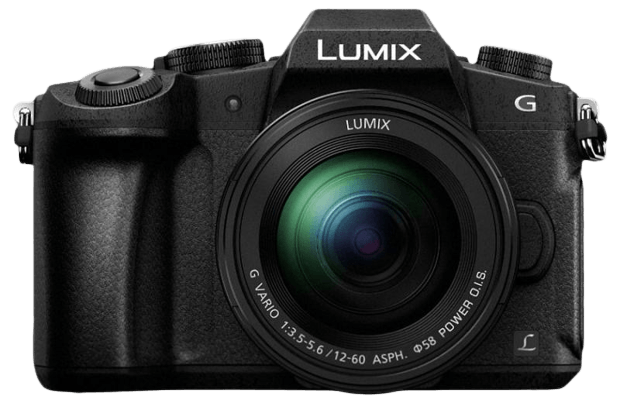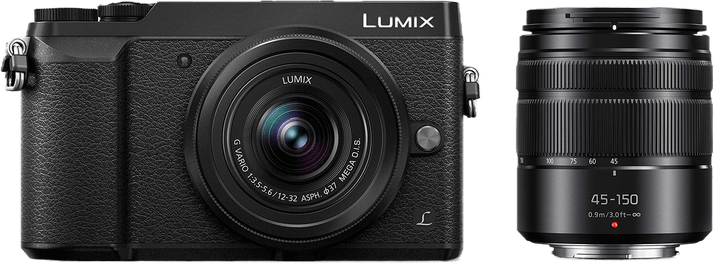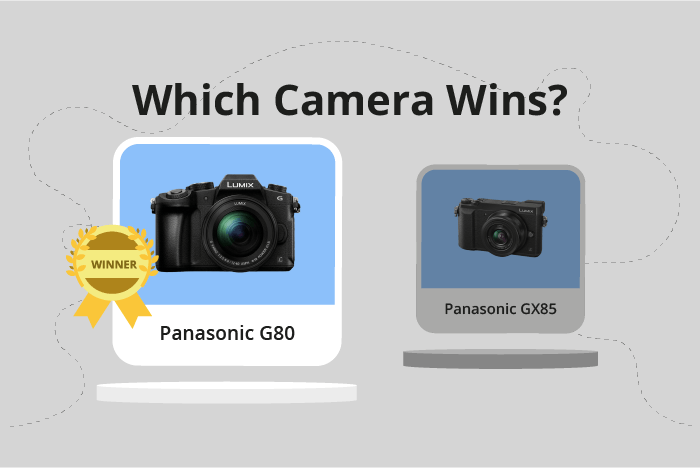Panasonic Lumix DMC-G80 vs Lumix DMC-GX80 Comparison
Panasonic Lumix DMC-G80

Panasonic Lumix GX85 (GX80)

The Panasonic Lumix DMC-G80 outperforms the Lumix DMC-GX80 with a score of 58/100 compared to 53/100. Both cameras, released in 2016, are mirrorless and share several specifications. The G80, however, offers a superior experience with its larger size (128 x 89 x 74mm) and slightly heavier weight (505g). This may provide better handling and stability for some users.
On the other hand, the GX80 has a smaller form factor (122 x 71 x 44mm) and lighter weight (426g), making it a more compact and portable option. It also comes at a lower launch price of $800 compared to the G80’s $900.
Taking these factors into account, the G80 excels in handling and stability while the GX80 shines in portability and affordability.
Panasonic Lumix DMC-G80 vs Lumix DMC-GX80 Overview and Optics
The Panasonic Lumix DMC-G80 takes the lead in optics, scoring 57/100, while the Panasonic Lumix DMC-GX80 scores 55/100. Both cameras share many specifications, such as 16-megapixel resolution, CMOS sensor type, Venus Engine processor, DXOMARK score for the sensor at 71, Micro Four Thirds sensor size, Micro 4/3 lens mount, and image stabilization.
The G80’s advantage lies in its shooting speed of 9 frames per second, which is higher than the GX80’s 8 frames per second. This difference enables the G80 to capture fast-moving subjects with greater ease and precision, making it better suited for action photography.
On the other hand, the GX80 does not outperform the G80 in any specific area within the realm of optics. The two-point difference in score between the cameras is solely due to the G80’s superior shooting speed.
Considering the above points, the Panasonic Lumix DMC-G80 proves to be the better choice for those seeking improved performance in action photography. The GX80, while not excelling in any particular aspect, remains a reliable option with its similar set of specifications. Both cameras offer a solid foundation for photography enthusiasts, with the G80 holding a slight edge in capturing fast-paced subjects.
Panasonic Lumix DMC-G80 vs Lumix DMC-GX80 Video Performance
The Panasonic Lumix DMC-GX80 outperforms the Panasonic Lumix DMC-G80 in video capabilities with a video score of 83/100 compared to the G80’s score of 56/100. This 27-point difference highlights the superiority of the GX80 in this aspect.
Both cameras share some common specifications, such as 4K max video resolution and 3840 x 2160 max video dimensions. However, the GX80 surpasses the G80 in terms of max video frame rate, offering 60fps while the G80 only provides 30fps. This allows the GX80 to capture smoother and more detailed videos, especially when recording fast-moving subjects or action scenes. Additionally, the GX80 has built-in time-lapse functionality, which the G80 lacks. This feature enables users to create stunning time-lapse videos without the need for external accessories or software.
Although the G80 falls short in comparison to the GX80 in video capabilities, it still offers decent video performance with its 4K resolution and 30fps frame rate. These features are suitable for casual users or those who do not require advanced video features.
Taking into account the differences in video capabilities, the Panasonic Lumix DMC-GX80 emerges as the superior choice for videographers, offering higher frame rates and time-lapse functionality. On the other hand, the Panasonic Lumix DMC-G80 remains a viable option for those who prioritize other aspects of camera performance and do not require advanced video features.
Panasonic Lumix DMC-G80 vs Lumix DMC-GX80 Features and Benefits
The Panasonic Lumix DMC-G80 wins in the features category with a score of 70/100, while the Panasonic Lumix DMC-GX80 scores 57/100. Both cameras share several specifications, including a 3-inch screen size, 1040000 dots screen resolution, touchscreen capability, flip screen, absence of GPS, presence of WIFI, and lack of Bluetooth connectivity.
The G80 outperforms the GX80 in the features department. One of the main reasons for this superiority is its more advanced and versatile options available to photographers. These additional features contribute to the G80’s higher score and make it a more appealing choice for users looking for a camera with a greater range of capabilities.
On the other hand, the GX80 still has some advantages. Its compact size and lighter weight make it a more portable and convenient option for users who prioritize mobility and ease of use. Additionally, the GX80’s lower price point may appeal to budget-conscious shoppers or those who do not require the additional features offered by the G80.
Considering the differences in features and performance, the G80 is the better choice for users seeking a camera with more advanced capabilities and versatility. Meanwhile, the GX80 is a suitable option for those who value portability, ease of use, and affordability. Both cameras offer excellent performance in their respective categories, making the final decision dependent on individual preferences and requirements.
Panasonic Lumix DMC-G80 vs Lumix DMC-GX80 Storage and Battery
The Panasonic Lumix DMC-G80 outperforms the Panasonic Lumix DMC-GX80 in storage and battery with a score of 21/100 compared to 16/100. Both cameras share common specifications, including one memory card slot and compatibility with SD, SDHC, and SDXC memory cards. Neither camera offers USB charging.
The G80’s advantage lies in its battery life, providing 330 shots per charge, while the GX80 only offers 290 shots. This difference allows users to take more photos before needing to replace or recharge the battery. The G80 uses a Lithium-ion battery, while the GX80 uses a DMW-BLG10 battery.
Despite its lower score, the GX80 does not have any specific advantages in storage and battery over the G80. It simply falls short in battery life.
Considering the storage and battery aspects, the Panasonic Lumix DMC-G80 is the better choice due to its longer battery life, enabling users to capture more memories without interruption.
Alternatives to the Panasonic Lumix DMC-G80 and Lumix DMC-GX80
Are you still undecided about which camera is right for you? Have a look at these popular comparisons that feature the Panasonic Lumix DMC-G80 or the Panasonic Lumix DMC-GX80:

